20th century alchemy
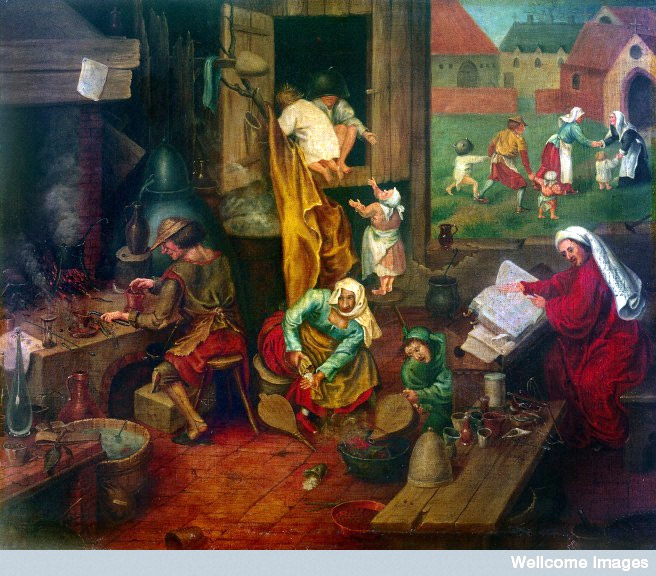
[An Alchemist, after an engraving by Pieter Bruegel the elder]
Medieval alchemists had hoped to transmute one element to another, (most prominently, anything into gold) but had only been using chemistry.
Nuclear decay backwards: bombardment
By the 1930s the first world war was over.
The electron, the nucleus, and a few other particles are known.
The health effects of exposure to nuclear radiation are not yet known.
Radioactivity and radioactive decay had been studied. $${}^{210}_{84}{\rm Po}\rightarrow {}^4_2 \alpha + {}^{206}_{82}{\rm Pb}$$
It occurred to some scientists that maybe they could try... shooting $\alpha$ or $\beta$ particles at nuclei--what would happen? $${}^4_2 \alpha + {}^{206}_{82}{\rm Pb}\stackrel{?}{\rightarrow}{}^{210}_{84}{\rm Po}$$
1931 - Bothe and Becker bombarded Beryllium with alphas and found a kind of radiation more penetrating than any $\gamma$ s yet known. $${}^4_2\alpha + {}^9_4{\rm Be}\rightarrow {}^{12}_6 {\rm C} +{}^?_?{\rm something}.$$
1932 - James Chadwick showed this was a new particle... the neutron. $${}^4_2\alpha + {}^9_4{\rm Be}\rightarrow{}^{12}_6{\rm C} +{}^1_0 {\rm n}.$$
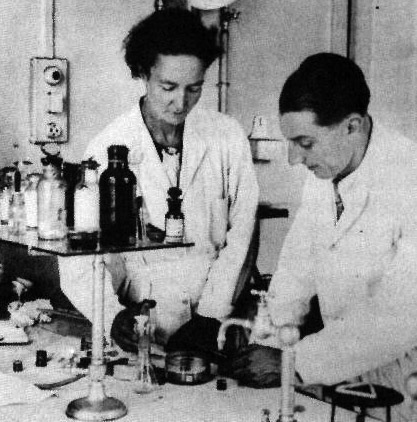 1933 -
Irene and Frederic Joliot-Curie bombard Aluminum and Boron with $\alpha$s,
$${}^4_2\alpha +{}^{27}_{13}{\rm Al} \rightarrow {}^{30}_{15}{\rm P}+{}^1_0{\rm
n}$$
1933 -
Irene and Frederic Joliot-Curie bombard Aluminum and Boron with $\alpha$s,
$${}^4_2\alpha +{}^{27}_{13}{\rm Al} \rightarrow {}^{30}_{15}{\rm P}+{}^1_0{\rm
n}$$
They were surprised by radioactivity coming from their aluminum foil after they turned off the alphas. It was now radioactive, because ${}^{30}_{15}{\rm P}$ is unstable (radioactive).
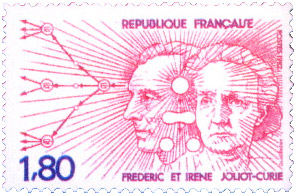 Radioactive
nuclei made by humans for the first time in history -> Nobel
prize 1935.
Radioactive
nuclei made by humans for the first time in history -> Nobel
prize 1935.
 Scientists went about bombarding nuclei with alphas and soon
neutrons, moving happily up- and down- the periodic table just a few
steps at a time finding
new isotopes and even new elements.
Scientists went about bombarding nuclei with alphas and soon
neutrons, moving happily up- and down- the periodic table just a few
steps at a time finding
new isotopes and even new elements.
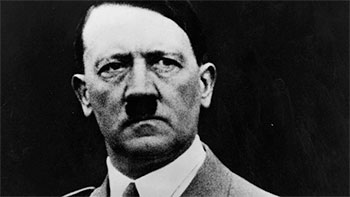 1933 - Adolf Hitler comes to power in Germany.
1933 - Adolf Hitler comes to power in Germany.
Something strange about Uranium
1938 - The Joliot-Curies bombard ${}_{92}$U with neutrons and get something that might be ${}_{57}$La--very far on the periodic table from Uranium??
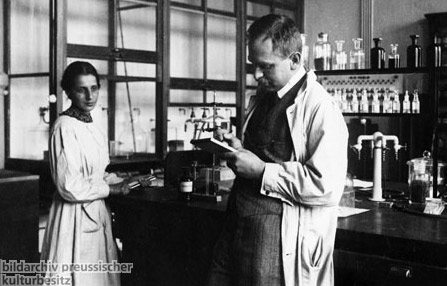
In Berlin, Germany Otto Hahn snorts!
But when he tries the same experiment he gets....
${}_{56}Ba$?? Tells his former collaborator, Lise Meitner, who proposes the liquid-drop model for the nucleus:
In Meitner's model the nucleus is not solid, but rather something like an over-full water balloon.
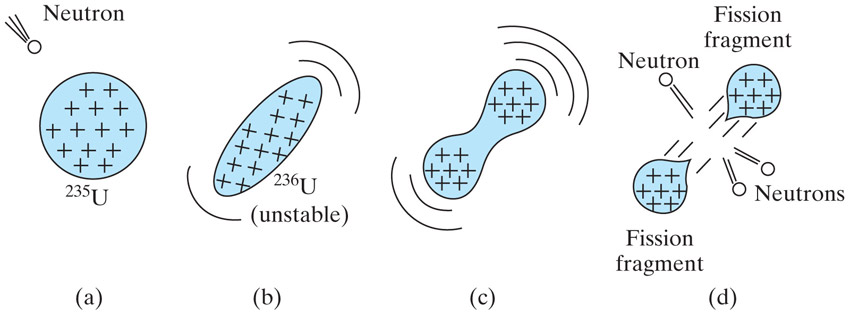
The energy released when one nucleus of Uranium-235 splits:
~30 million $\times$ energy of one TNT molecule.
Dangers of fission fragments:
- moving fast, they cause more damage than most $\alpha$ or $\beta$ particles from radioactive decay.
- The fragments are frequently radioactive themselves, and cause damage when they decay.
1939 - In the Fall of 1939 the german word blitzkrieg enters the American vocabulary as Nazi Germany invades Poland
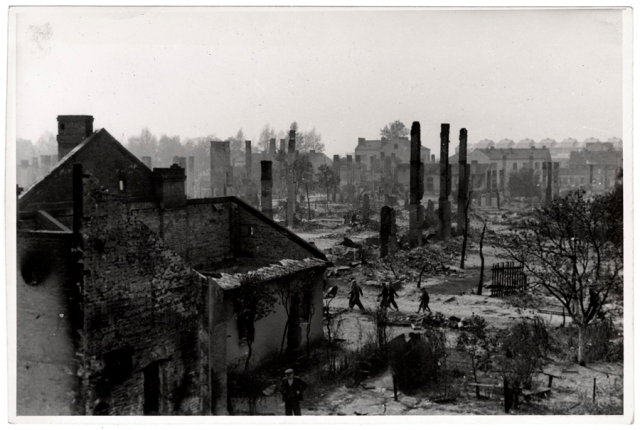
Poles walking through besieged Warsaw
Frederic and Irene Joliot-Curie stop fission research. They decide to lock all their notebooks having to do with nuclear fission up in a vault at the Academie des Sciences.
 Read Bomb through "Finding Einstein".
Read Bomb through "Finding Einstein".